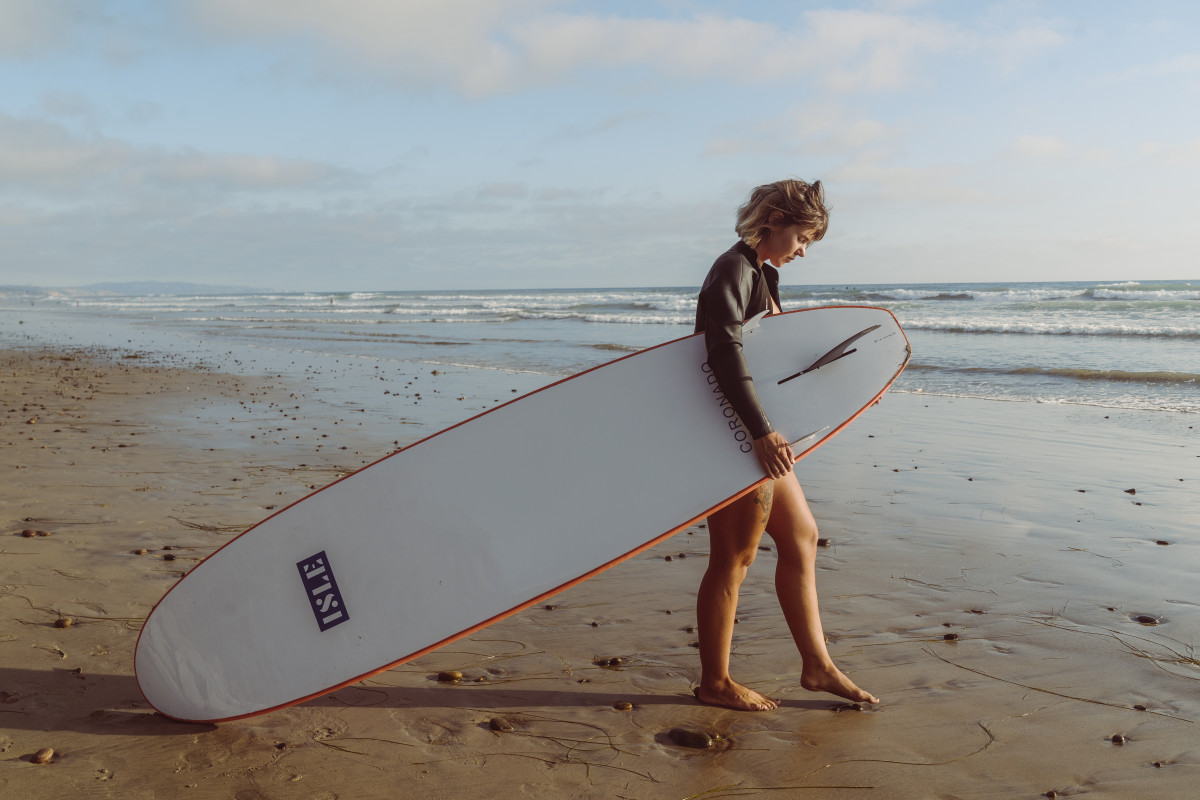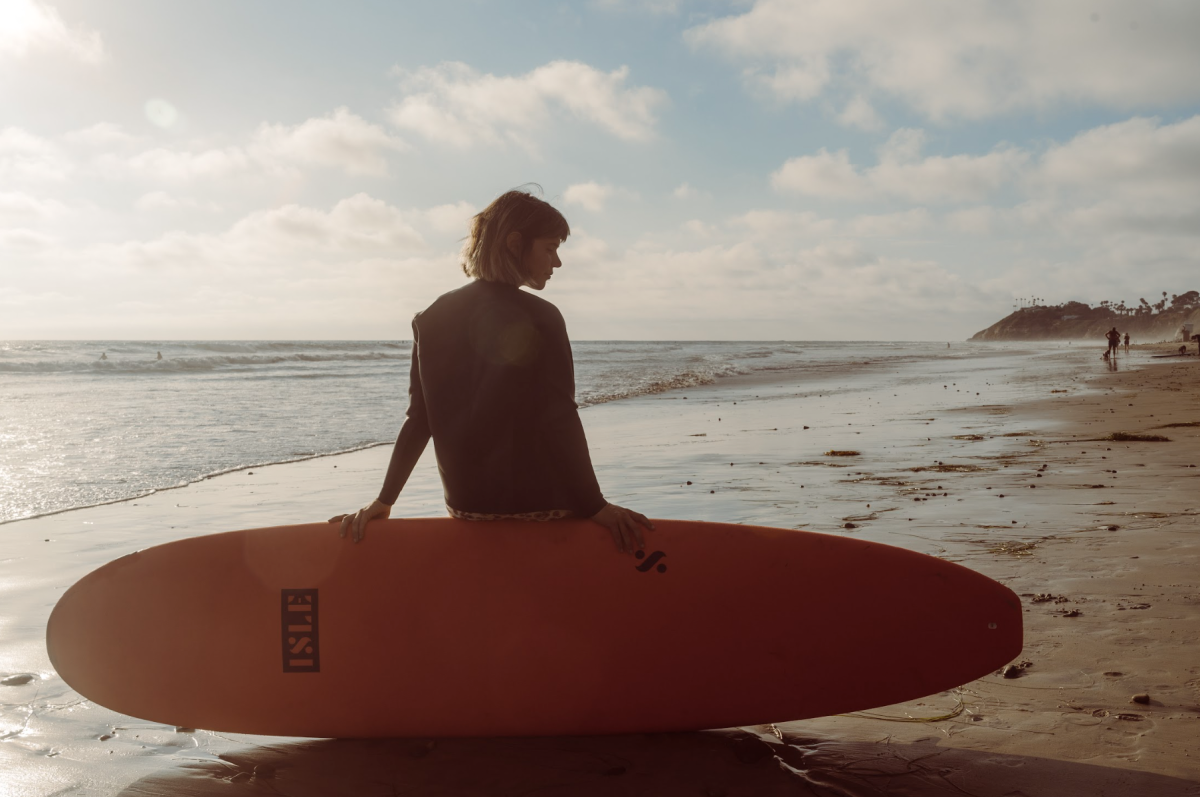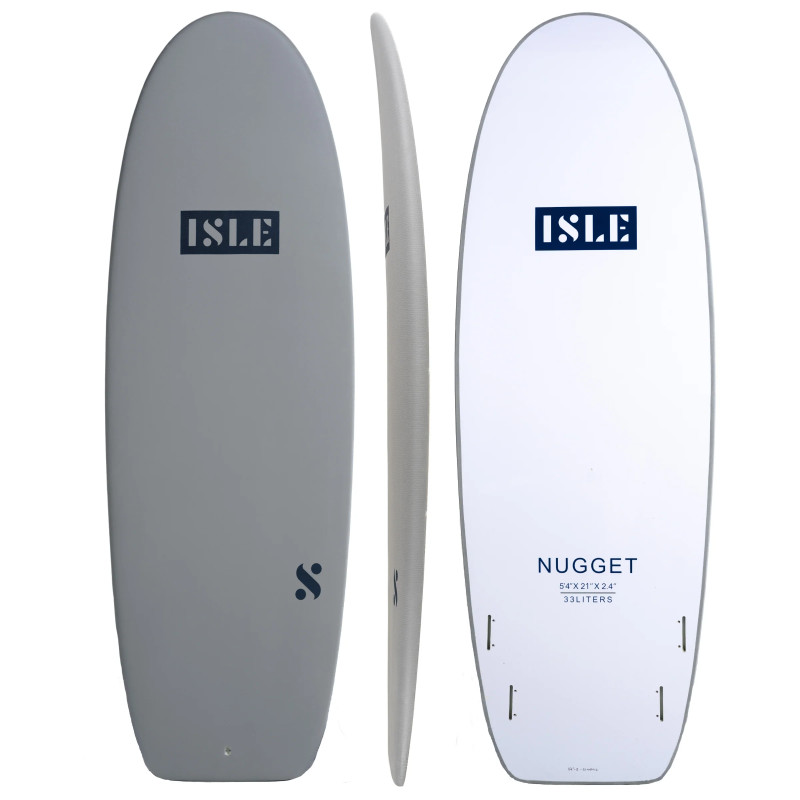
Isle Surfboards
Despite the modern explosion of soft top surfboards, just look at any lineup worldwide and you’re bound to see more than a few foam crafts floating around – the squishy, beginner-friendly boards have been around for half a century. Around the same time Kelly Slater was born in Cocoa Beach, Florida, so was the soft top surfboard.
Mike Doyle, the late surfer and mad scientist surf craft innovator, helped create the first soft surfboard back in 1974. It was an extension – literally – of the Tom Morey boogieboard. And for decades, they never really took off, at least not like today, nor did the materials or functionality. Anyone who remembers the old Doyle surfboards will have visceral recollections of the stomach rashes they induced…like sandpaper scraping on flesh.
Then came Costco, and the mainstreamification of modern soft top surfboards.

Isle Surfboards
And today, the soft top surfboard market has ballooned to zeppelin proportions. There are countless brands, some from pro surfers; the quality has drastically improved; some big-name surfers almost exclusively ride soft tops (Ben Gravy, Blair Conklin, JOB, etc.); and they’re not just for novices anymore. The stigma of soft tops being beginners-only boards is dead. Nowadays, anyone can ride ‘em – in thumping shorebreak, and even real waves, too.
Some soft tops, however, are better than others. Some are quality; some are cheap.
So, when San Diego’s Isle Surfboards sent us two of their models – the “Coronado” and the “Nugget” – to test drive, we gave ‘em a go. After some thorough testing in the field, we got a firsthand feel for the boards. And, most importantly, whether it’s worth grabbing one for those warm summer days, when the waves might be mediocre, and a softie is the sled du jour.
To cop or drop? Keep reading.

Isle Surfboards
Coronado, 7’6”: $495
Instead of opting for the larger, 8’0” model, I went for the nimbler, perhaps more maneuverable 7’6” Coronado. Who knows, I thought, maybe it could be the best of both worlds – a few cheater fives, some casual trimming down the line, maybe even a cutback.
Mostly, however, I tried to perfect one of my favorite soft top longboard maneuvers: the coffin.
The testing ground I chose was a certain South Bay, Los Angeles beachbreak known for its not-so-stellar surf and Disneyland-level crowds. And during the handful of sessions in which I rode the board, I found that it fit right in with the usual suspects seen at this spot. (Read: those of the softie variety.) But one thing stood out – the Coronado offered a more high-performance feel than most of the other boards bobbing around in this particular City of Angels surf spot.
That’s due to the fact that the Coronado isn’t your average soft top. Instead of the traditional, spongy boards on the market, this board features two layers of 6oz fiberglass on top and one layer of 4oz fiberglass on the bottom. It also has a harder texture on the deck, with a crocodile-skin style, that makes it feel more like a real longboard, versus an oversized boogieboard.
And yes, as I found on many waves, the board is coffin-friendly.

Isle Surfboards
Nugget, 5’4″: $395
Soft tops are made to be fun.
Unless you’re a beginner, and you’re riding one as a form of surfing training wheels, then soft tops should be used as something not to take too seriously. The Nugget from Isle is just that.
The Nugget is just like it sounds – it’s small, stubby, rounded on the rails, curved on the nose, flat on the tail, and with very minimal rocker. According to Isle, it’s one of their more high-performance models, allowing for turns, floaters, tubes and, for lack of a better term, ripping. And because of the size, it works well in steeper waves, when you want something more compact to knife it under the lip…if you’ve got the knack for things like that.
For my test run on the Nugget, I chose an undisclosed southern California shorebreak wave. Growing up in these types of conditions, I felt right at home.
On one particular wave, I took off late, almost under the lip. Since I was nearly vertical while getting to my feet, I didn’t expect to make the drop. In fact, it was an airdrop and the board disengaged from the wave. I was gonna get pitched, I thought, for sure. But to my surprise, the board handled the freefall with ease – thanks to the wide frame – and with the quad fin setup, it gripped the flats without slipping out. It handled, nearly, like a shortboard.
Of course, the wave was a closeout, so no fault by the board there.

Isle Surfboards
The verdict?
As previously mentioned, the soft top revolution is here. The market it flooded with ‘em. But if you’re looking for something more – the quality and performance of a foam and fiberglass stick but with the fun factor of a soft top – then the Isle Surfboards collection is the way to go. Soft tops might not be for everyone, but if that’s your thing, these boards are worth checking out.
For more on Isle Surfboards, head here.
The Arena Media Brands, LLC and respective content providers to this website may receive compensation for some links to products and services on this website.

